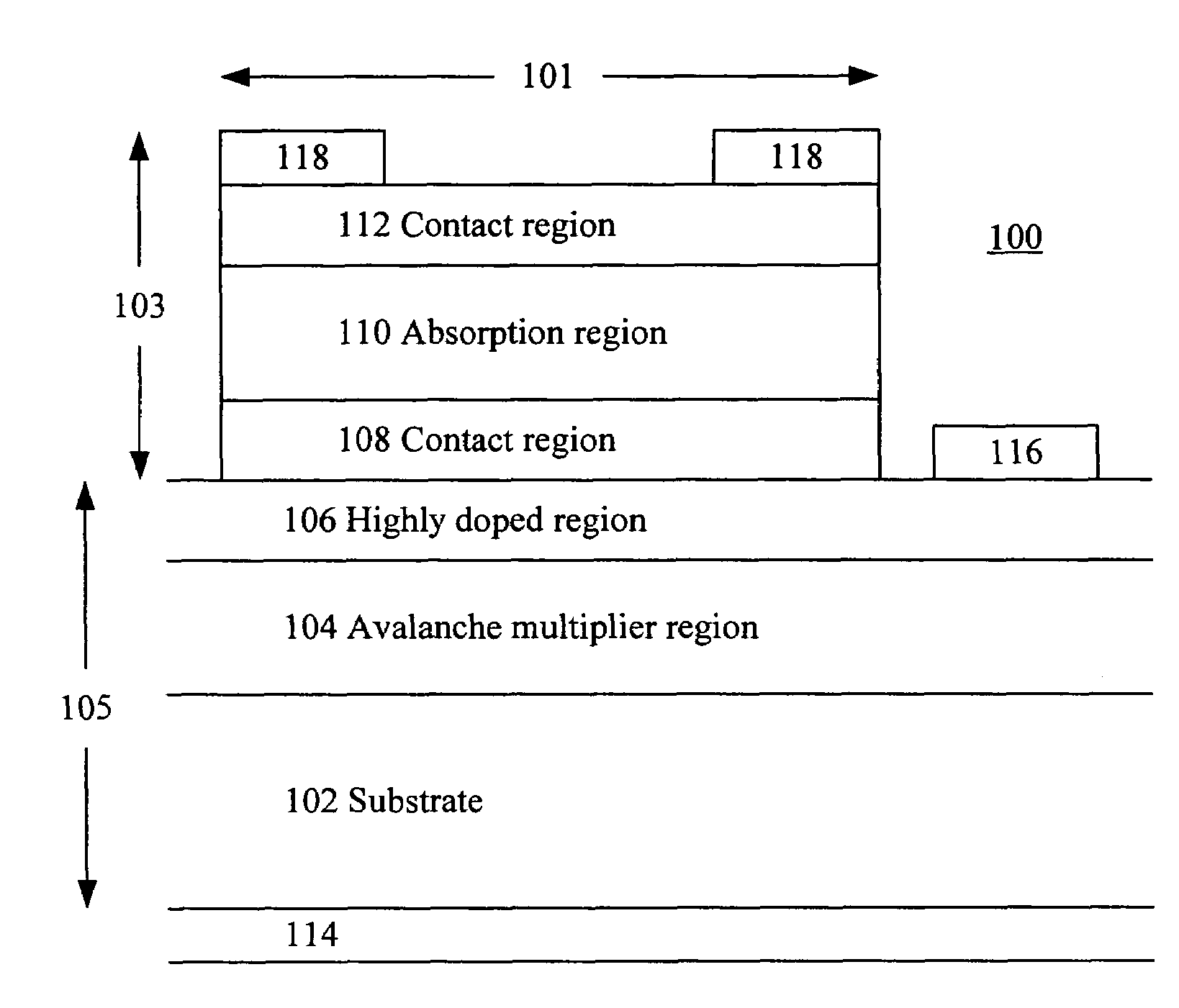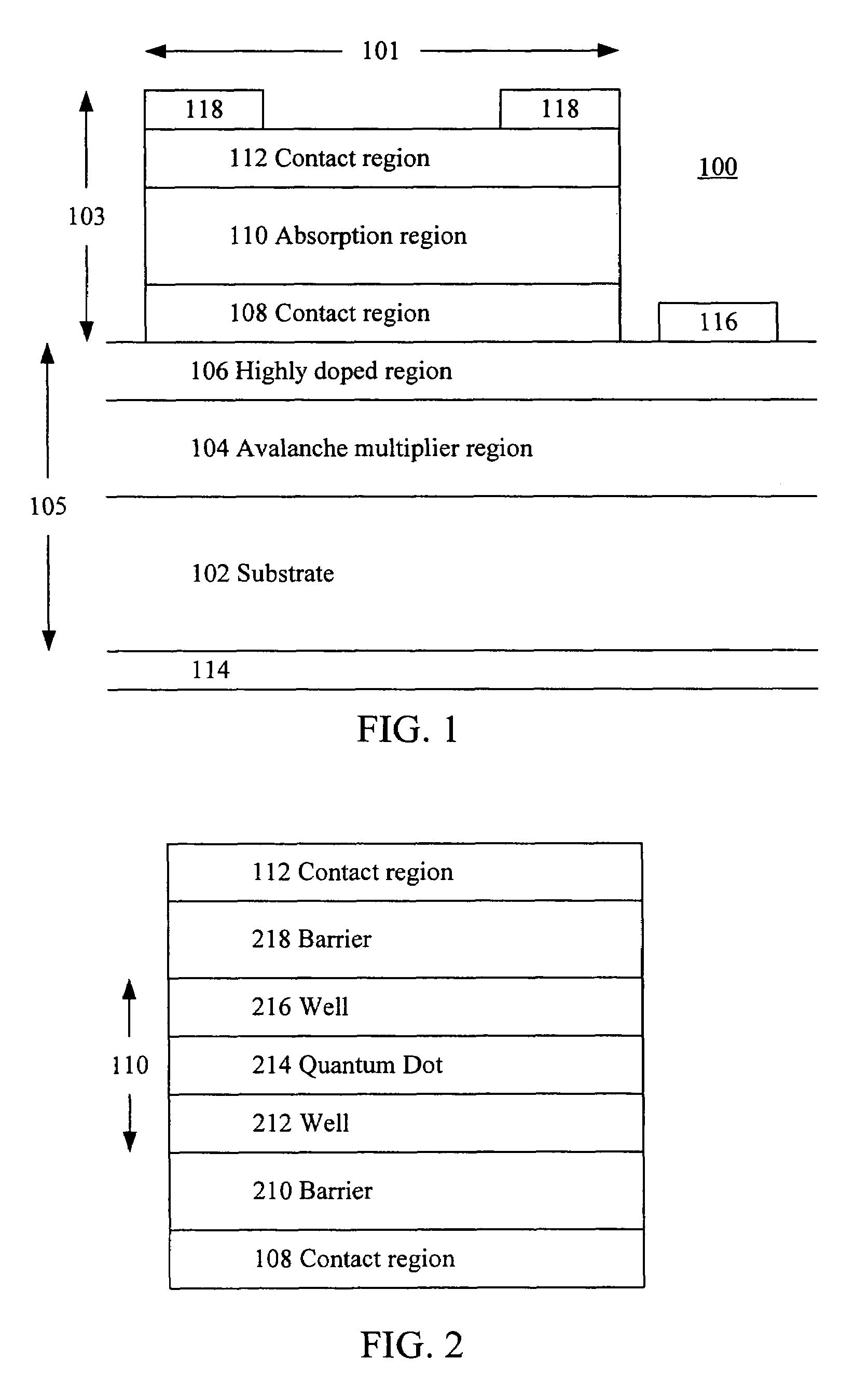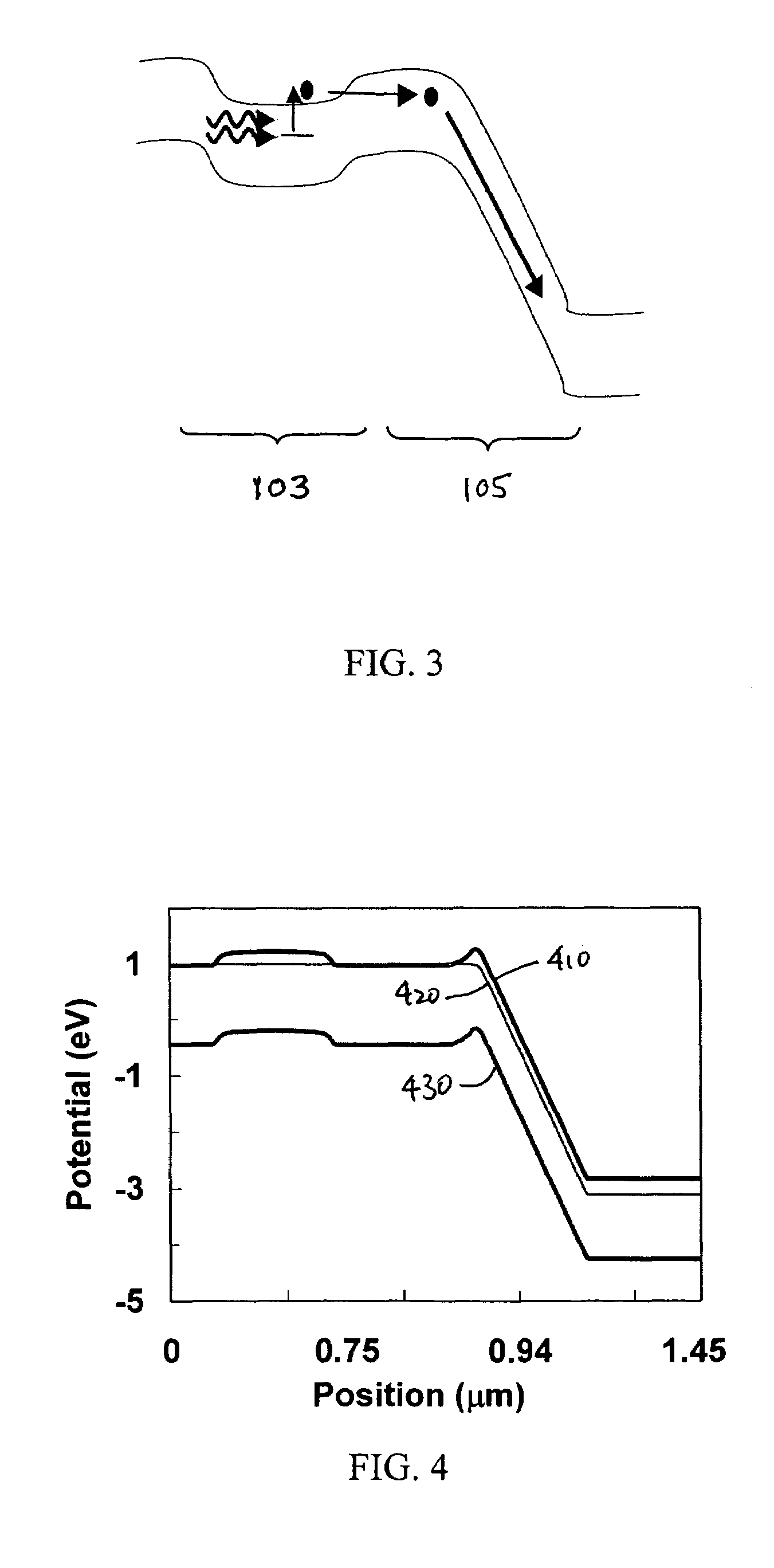Intersubband detector with avalanche multiplier region
a detector and multiplier technology, applied in the field of photodetectors, can solve the problems of affecting the performance of the device, and limiting the progress of the mct-based focal plane array,
- Summary
- Abstract
- Description
- Claims
- Application Information
AI Technical Summary
Benefits of technology
Problems solved by technology
Method used
Image
Examples
Embodiment Construction
[0022]FIG. 1 is a sectional view of one example of a quantum dot avalanche photodetector (QDAP) 100 according to the present invention. In this example, QDAP 100 includes a quantum dot absorption region 110 and an avalanche multiplier region 104. The quantum dot absorption region 110 is part of an n-i-n structure 103. The avalanche multiplier region 104 is part of a p-i-n structure 105. These structures are supported on a substrate 102. The QDAP 100 also includes electrical contacts, implemented as ohmic contact regions 114, 116 and 118 and doped regions 106 / 108 and 112 in this example. These electrical contacts allow voltages to be applied to the absorption region 110 and to the avalanche multiplier region 104.
[0023]FIG. 1 will be discussed in the context of a particular embodiment and is simplified for ease of discussion. Thus, it is not intended to be limiting. For example, other embodiments may use some, all or none of the specific regions shown in FIG. 1. The basic structure ma...
PUM
 Login to View More
Login to View More Abstract
Description
Claims
Application Information
 Login to View More
Login to View More - R&D
- Intellectual Property
- Life Sciences
- Materials
- Tech Scout
- Unparalleled Data Quality
- Higher Quality Content
- 60% Fewer Hallucinations
Browse by: Latest US Patents, China's latest patents, Technical Efficacy Thesaurus, Application Domain, Technology Topic, Popular Technical Reports.
© 2025 PatSnap. All rights reserved.Legal|Privacy policy|Modern Slavery Act Transparency Statement|Sitemap|About US| Contact US: help@patsnap.com



